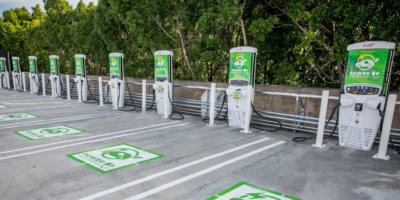The Do’s and Don’ts of Your Emergency Fund: A Guide to Financial Security

Life is unpredictable, and sometimes the things we least expect are expensive. New brake pads, calling out for a plumber in the middle of the night, and repairing your roof — these unexpected expenses are easier when you have an emergency fund. Here’s what you can do (and what you should avoid) to ensure your emergency fund is ready for anything.
DO Set a Goal
Experts recommend aiming for three to six months’ worth of living expenses in your emergency fund. At this ample size, your emergency fund could protect you from a whole host of problems — from unemployment to unexpected car trouble, household repairs, and medical expenses.
DON’T Worry if You Fall Short
Let’s face it —three months of living expenses is a lot of money, and it may take you a long time to achieve this goal.
Most people are off this target. Yahoo! Finance reports just 43% of people could pay for an emergency expense of $1,000 with savings alone. The rest — a whopping 57% of Americans — would have to find another way.
An online cash advance provides that other way for countless people in need of emergency assistance. If you are considering a cash advance today, the folks at MoneyKey recommend you research this option thoroughly before you apply. You stand to make informed decisions when you have all the facts about the cost of your next loan online.
DO Make it Routine
Do you ever forget to transfer money to your savings accounts? Make it automatic. This simple trick can help you ensure a portion of your income always goes to your emergency fund. By automating the process, you remove the chance of spending this money before you can transfer it.
How much should you automate? Experts recommend you save roughly 20% of your monthly income. Keep this figure in mind when you sit down with your budget.
DON’T Put All Your Eggs in One Basket
You already know the emergency fund isn’t foolproof. You could fail to reach your goal before an emergency arrives, or you might drain your savings for one expense only to get hit by another. You also have to recognize that some problems are simply too big for your emergency fund to handle.
For life’s nastiest surprises, you need insurance. Health, auto, and home insurances provide the largest safety net to protect you against large-scale damage and costly bills.
DO Keep it Handy
An emergency can crash land in your life at a moment’s notice, so you should be able to access your emergency fund at a moment’s notice, too.
Put your emergency fund in a liquid account, like high-yield savings accounts or money market funds. These accounts offer both security and the ability to withdraw funds quickly without incurring penalties or fees.
DON’T Be Tempted to Invest
Even after securing a high-yield savings account, you might be disappointed with the interest rate you end up getting. You might consider investing your savings to earn a higher return on your fund.
Investing in your emergency fund is not a wise idea. While these investments have the potential for high returns, they lack the stability and immediate accessibility needed for emergencies.
The market can go through some pretty steep ups and downs during economic downturns, and experts are ringing the warning bell for a looming recession.
Now is not the time to gamble your financial security. Instead, keep your emergency fund separate from your investment portfolio to ensure its stability and availability when you need it most.
The Takeaway:
Use these rules to help you build a stronger and more formidable emergency fund.
Research Snipers is currently covering all technology news including Google, Apple, Android, Xiaomi, Huawei, Samsung News, and More. Research Snipers has decade of experience in breaking technology news, covering latest trends in tech news, and recent developments.










